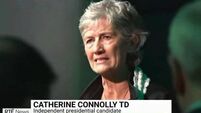Child development checks being missed
The Oireachtas committee on health and children heard a strong argument yesterday for a dedicated child health workforce from the head of the Institute of Community Health Nurses.
Institute director Mary O’Dowd said there was evidence that routine childhood screenings were getting lost through the cracks due to a 25% rise in the clinical caseload of public health nurses in the last three years.













